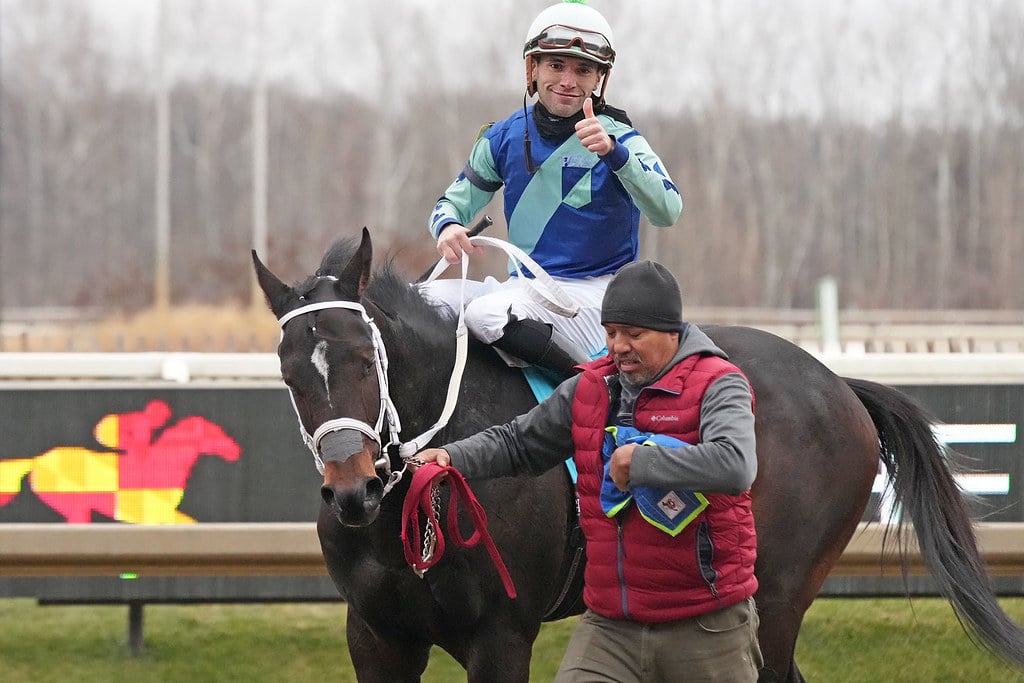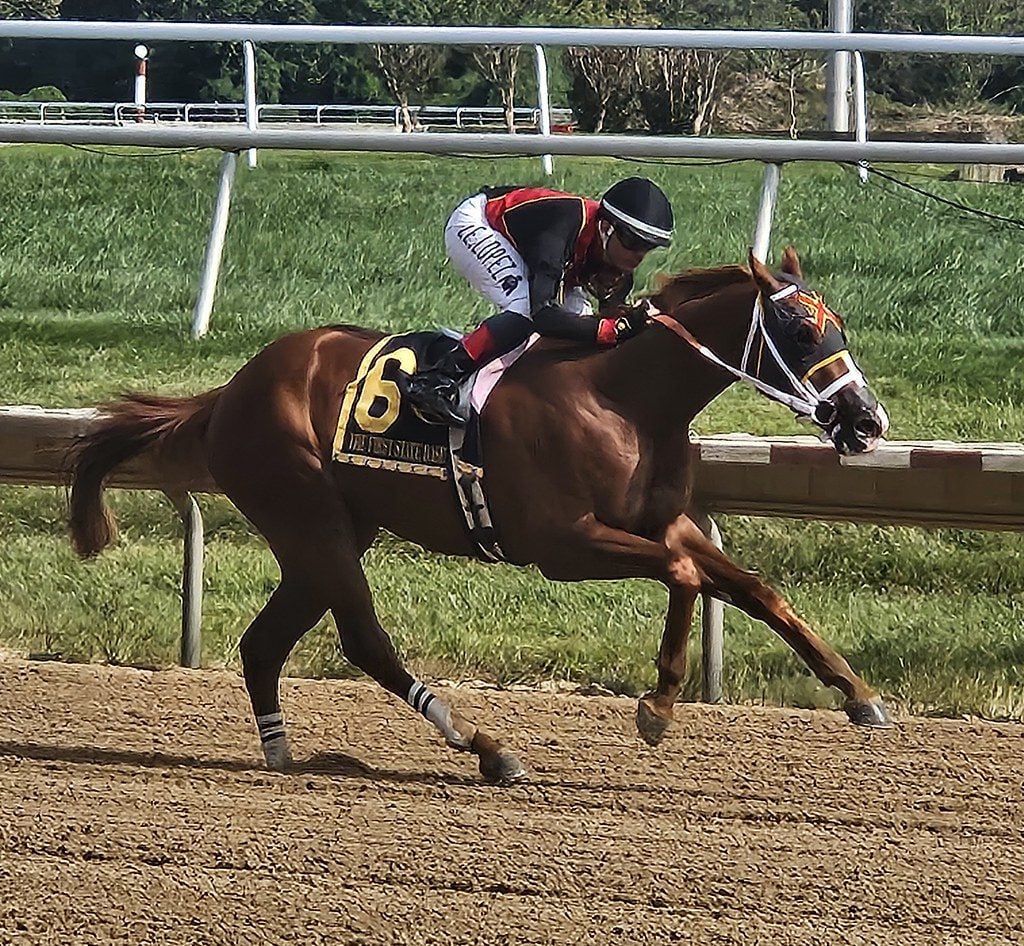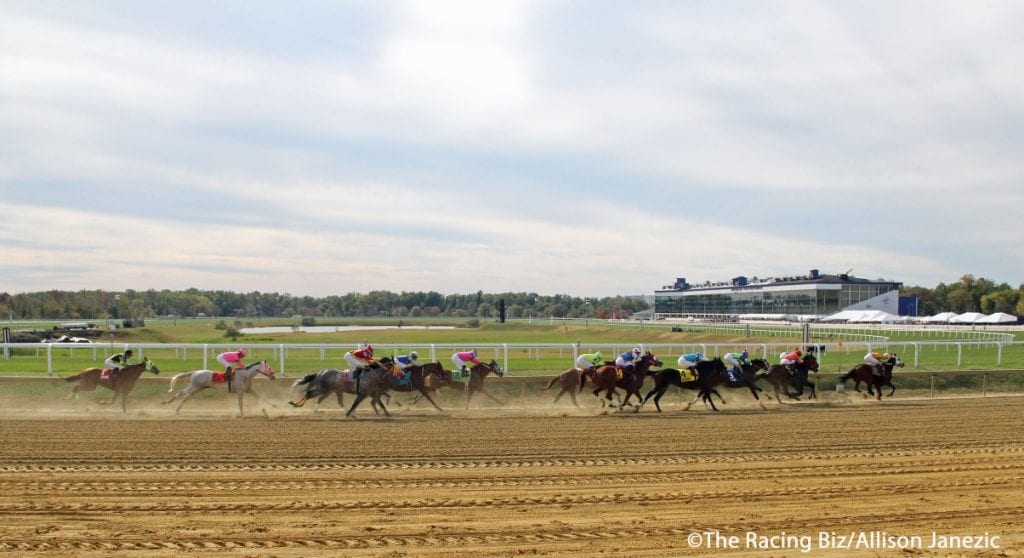GRAYSON-JOCKEY CLUB AWARDS $1.6 MILLION IN GRANTS

The board of directors of Grayson-Jockey Club Research Foundation announced today that it has authorized expenditure of $1,638,434, the most that the foundation has ever allocated in a year, to fund 12 new projects at 12 universities, 12 continuing projects, and two career development awards worth $20,000 each. This marks the seventh straight year that more than $1 million has been approved. The 2021 slate of research brings Grayson-Jockey Club Research Foundation’s totals since 1983 to more than $30.6 million to underwrite 396 projects at 45 universities.
- Maryland-based Balboa to run in Jerome
 The Brittany Russell-trained James F. Lewis, III Stakes winner Balboa, recently third in the G2 Remsen, will try his luck in the Jerome at the Big A Jan. 3.
The Brittany Russell-trained James F. Lewis, III Stakes winner Balboa, recently third in the G2 Remsen, will try his luck in the Jerome at the Big A Jan. 3.
“We are heartened by the continued commitment of universities to supporting equine veterinary research throughout these difficult times and that we are able to distribute more funding than ever before, enabling us to help horses of all breeds and disciplines,” said Dell Hancock, chair of Grayson.
“Despite a challenging year, Grayson-Jockey Club was excited to receive 51 grant applications from a variety of veterinary institutions in North America as well as five other countries,” said Dr. Stephen M. Reed, chair of Grayson’s research advisory committee. “The subject matter is diverse and ranges from identifying new methods to treat and prevent infectious disease to development of computational models using big data to investigation of novel imaging techniques to prevent orthopedic injuries.”
Below is an alphabetical list by school of the new projects:
Passive Immunization of Foals with RNA-AB against R Equi
Jeroen Pollet, Baylor College of Medicine
By inhalation therapy, we intend to deliver the genetic code for a protective antibody against Rhodococcus equi into the lung cells of newborn foals, to rapidly protect them against infection.
Hyperthermia and Acidosis in Exertional Muscle Damage
Michael Davis, Oklahoma State University
This project will identify an underlying cause of exercise-associated muscle fatigue and soreness and allow trainers to more precisely condition horses with fewer training days lost to muscle soreness.
Developing an Improved Serological Test for Strangles
Noah Cohen, Texas A&M
We propose to develop a more accurate blood test to identify horses infected with the bacterium that causes strangles to improve control and prevention of strangles.
Mitigation of Equine Recurrent Uveitis through SOCS
Joseph Larkin, University of Florida
We seek to design a topical eye drop, using a natural protein, which helps to prevent pain and blindness associated with equine recurrent uveitis.
Environmental Origins of Equine Antimicrobial Resistance
Brandy Burgess, University of Georgia
This study will elucidate how antimicrobial resistance and virulence determinants are shared among horses and hospital environment, as well as the role antimicrobial exposure plays at this interface.
Treatment of Joint Injury with Mesenchymal Stromal Cells
Thomas Koch, University of Guelph
Evaluation of equine umbilical cord blood-derived mesenchymal stromal cells to treat joint injuries in horses.
Optimizing Bone Growth to Reduce Equine Fracture
Mariana Kersh, University of Illinois Urbana-Champaign
Reduction in distal limb fractures through exercise in young horses would have a significant positive impact on horse welfare and the economics and public perception of the horse industry.
New Generation Equine Influenza Bivalent VLP Vaccine
Thomas Chambers, University of Kentucky
We propose to create a novel, safe and effective vaccine for equine influenza based on the 21st-century technology of noninfectious virus-like particles produced in plants.
Injury Prediction from Stride Derived Racing Load
Chris Whitton, University of Melbourne
By studying patterns in bone fatigue accrual over time in racehorses, we will better, and earlier, identify horses at risk of limb injury, facilitating timely evidence based preventative strategies.
Predicting Exercising Arrhythmias with Resting ECGs
Molly McCue, University of Minnesota
We will use at rest ECGs to identify horses with irregular heart rhythms at exercise that can cause sudden cardiac death (SCD), allowing for increased monitoring and improved understanding of SCD.
Understanding and Preventing Supporting Limb Laminitis
Andrew Van Eps, University of Pennsylvania
We aim to make supporting limb laminitis preventable through analysis of archived model tissues, a multi-center limb motion study of horses at risk, and development of a prototype therapeutic device.
Diagnosis of Incipient Condylar Stress Fracture
Peter Muir, University of Wisconsin-Madison
This study will save the lives of racehorses by establishing screening using fetlock CT for diagnosis of horses with a high risk of imminent serious injury for personalized clinical care.
The Storm Cat Career Development Award, inaugurated in 2006, grants $20,000 to an individual considering a career in equine research. This year’s recipient is Dr. Callum G. Donelly of the University of California, Davis. Dr. Donelly has completed his residency program and is in a research training position under the mentorship of Dr. Carrie Fino. His project, “Proteomic Investigation of Equine Spinal Ataxia,” is expected to identify novel protein biomarkers that differentiate normal horses from those with spinal ataxia, with high sensitivity and specificity.
The Elaine and Bertram Klein Career Development Award was first awarded in 2015 and grants $20,000 to a prospective equine researcher. This year’s recipient is Dr. Aileen Rowland of Texas A&M University. Dr. Rowland’s research focuses on the efficacy of xenogeny-free mesenchymal stem cells for osteoarthritis.
“We are pleased to continue our funding of two career development awards to support individuals passionate about equine research,” said Dr. Johnny Mac Smith, consultant to the research advisory committee. “Dr. Donelly and Dr. Rowland are worthy recipients of these grants, and I look forward to seeing how their current and future projects contribute to improving equine health in the future.”
Visit their website for more information on the awards.
LATEST NEWS














